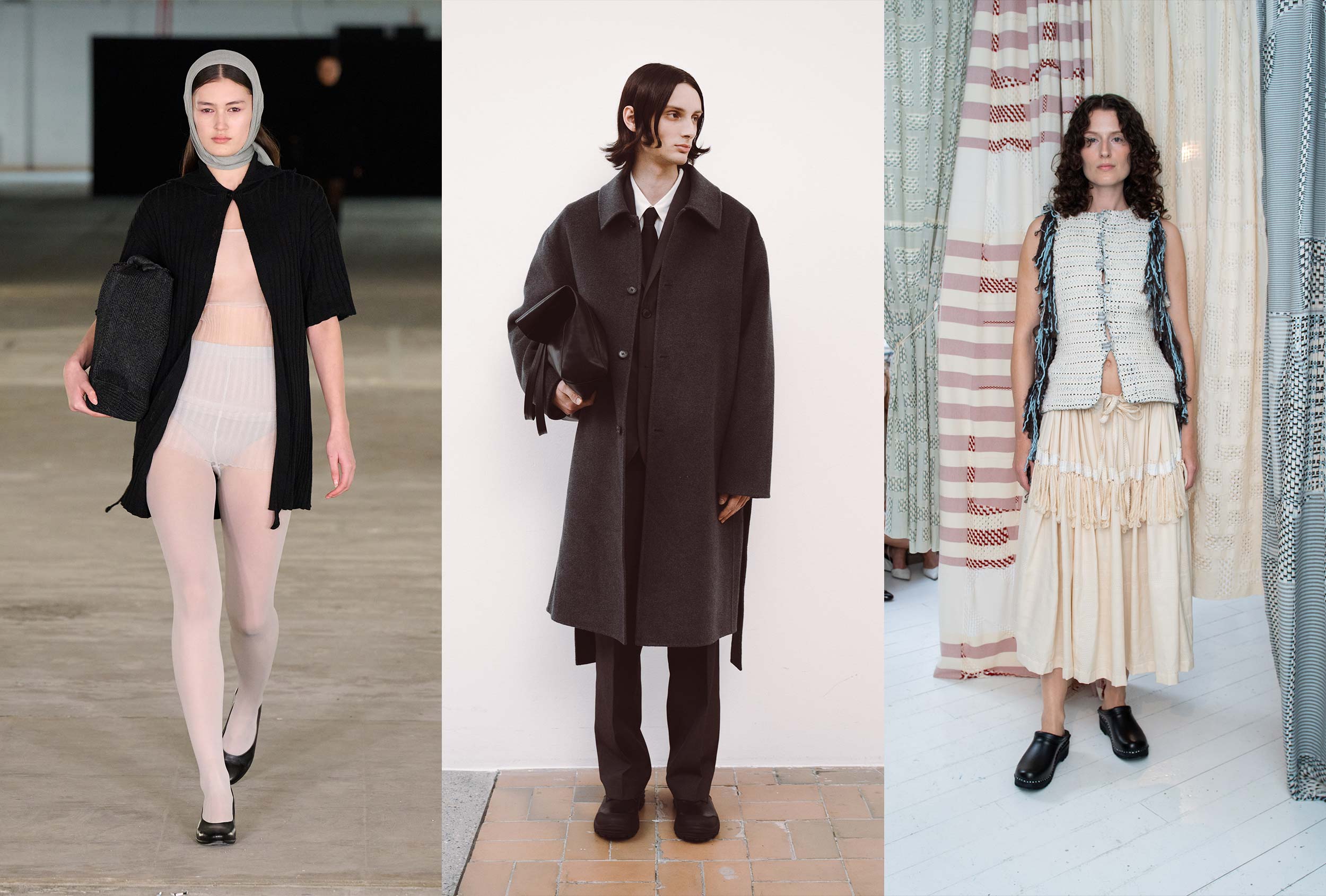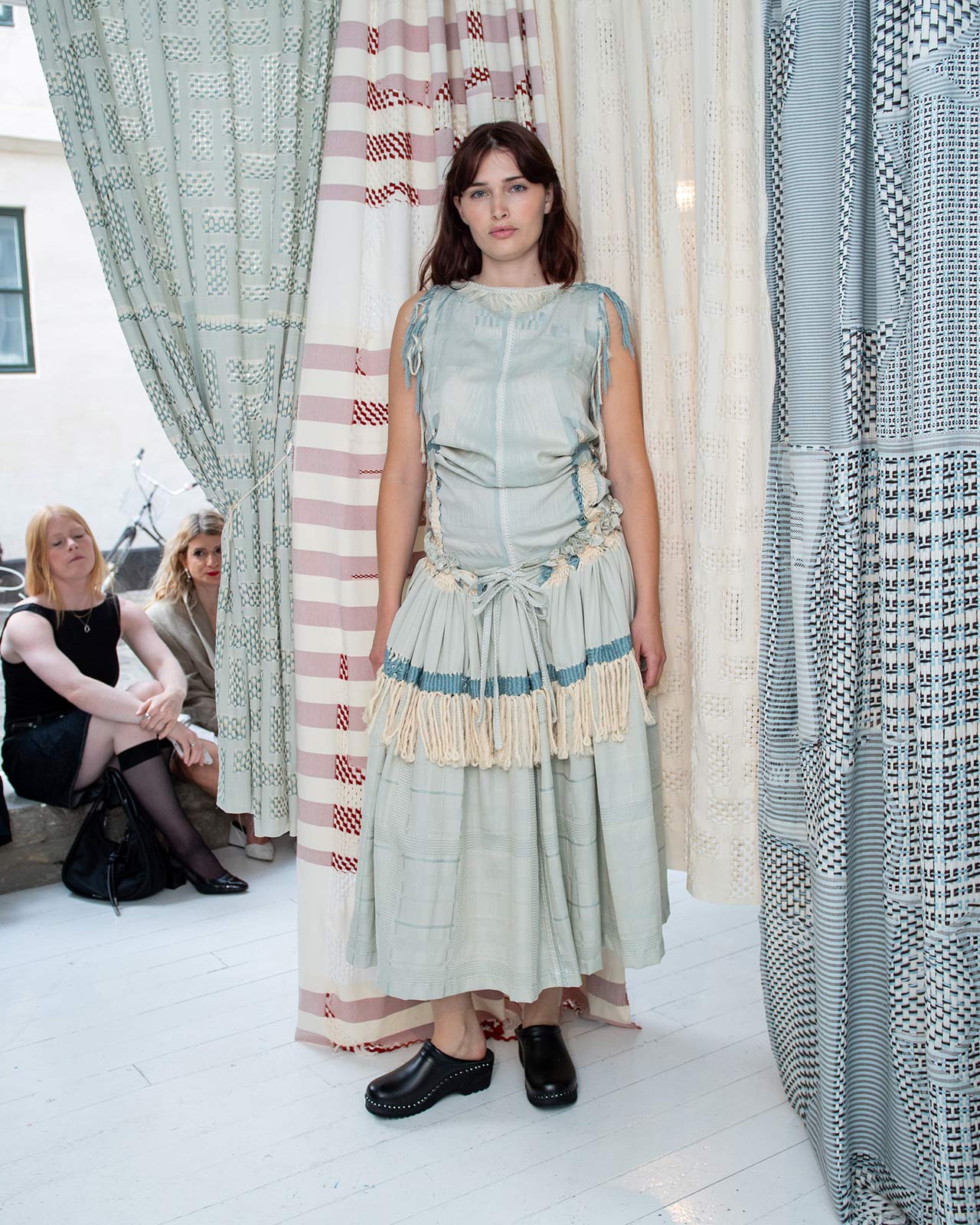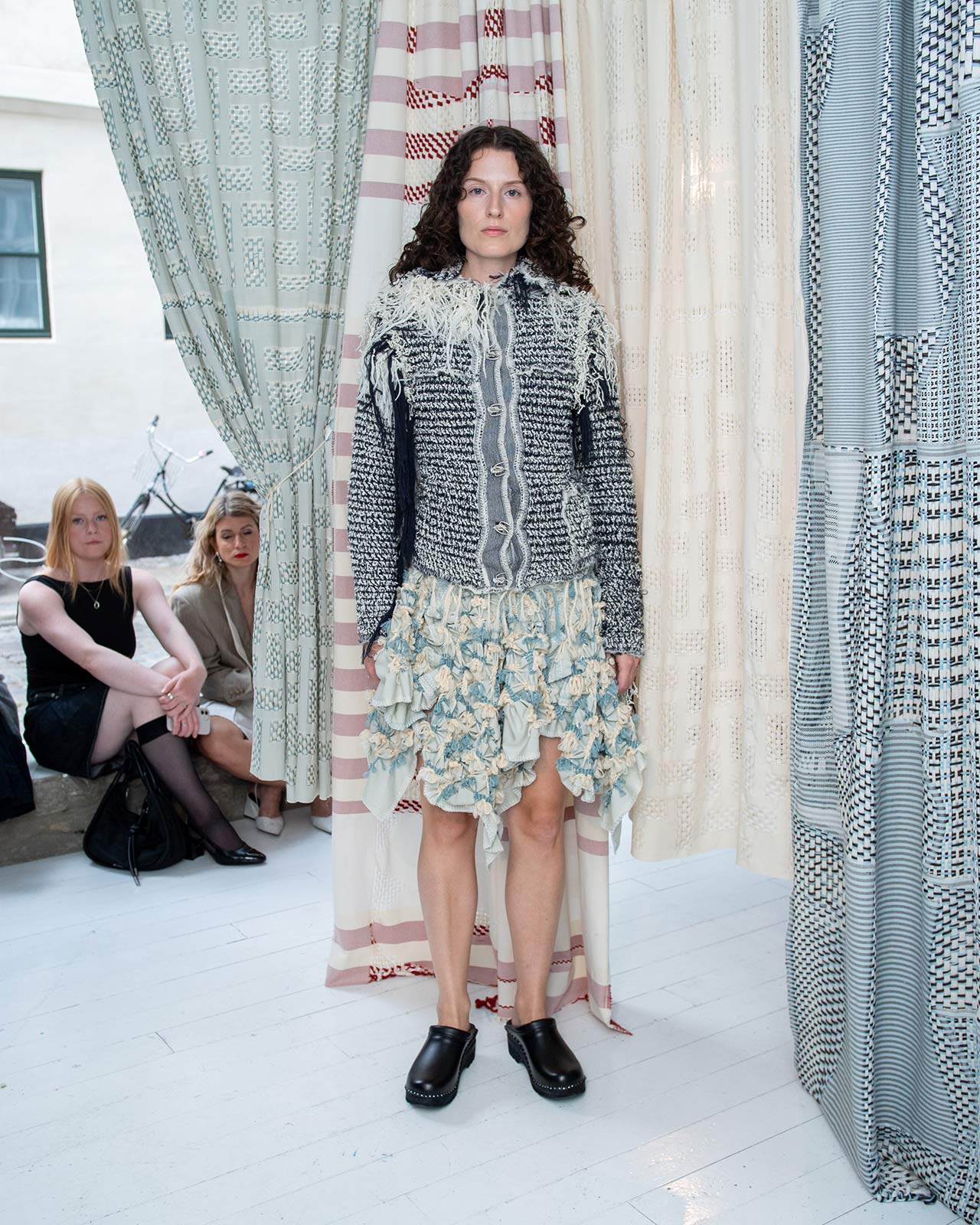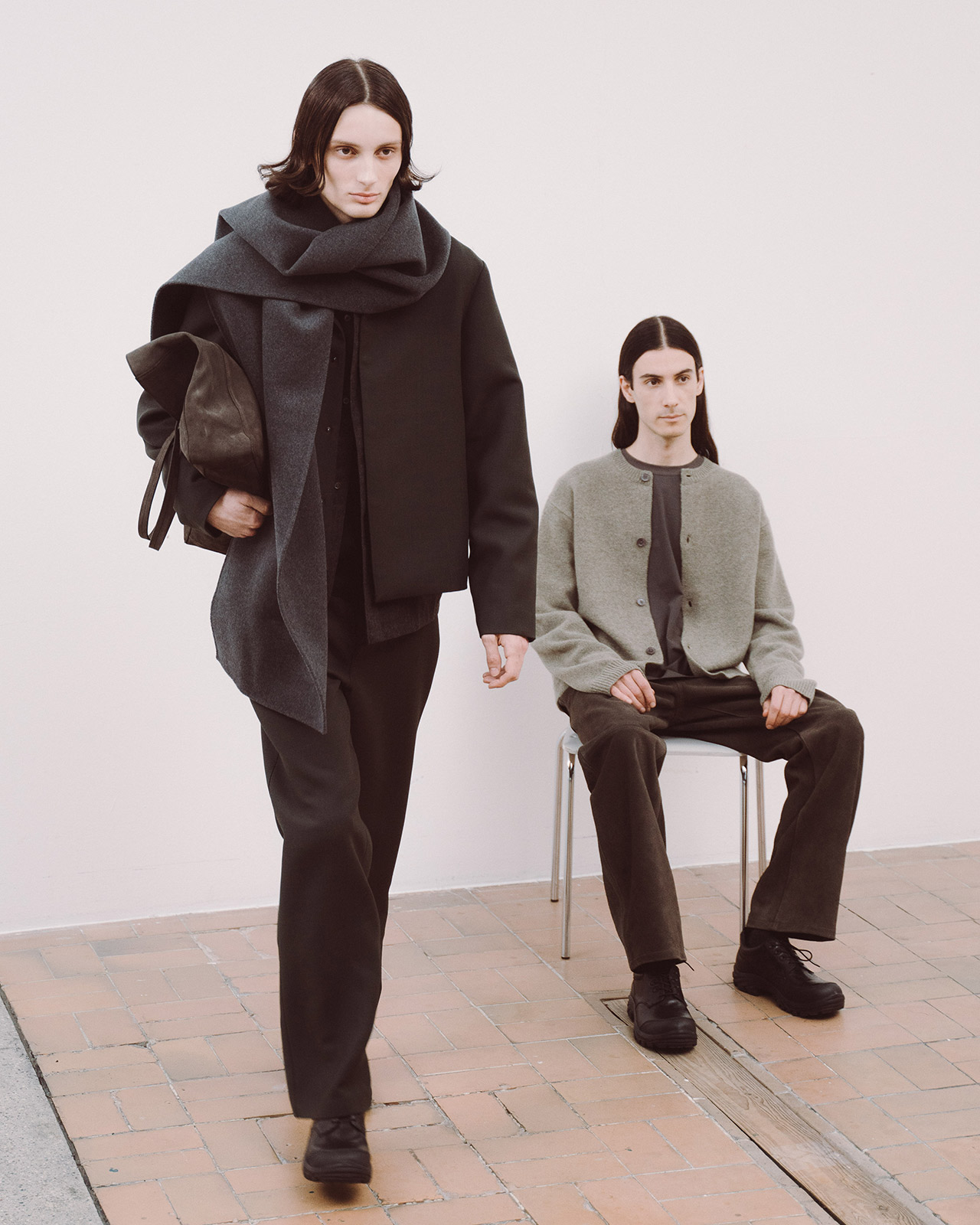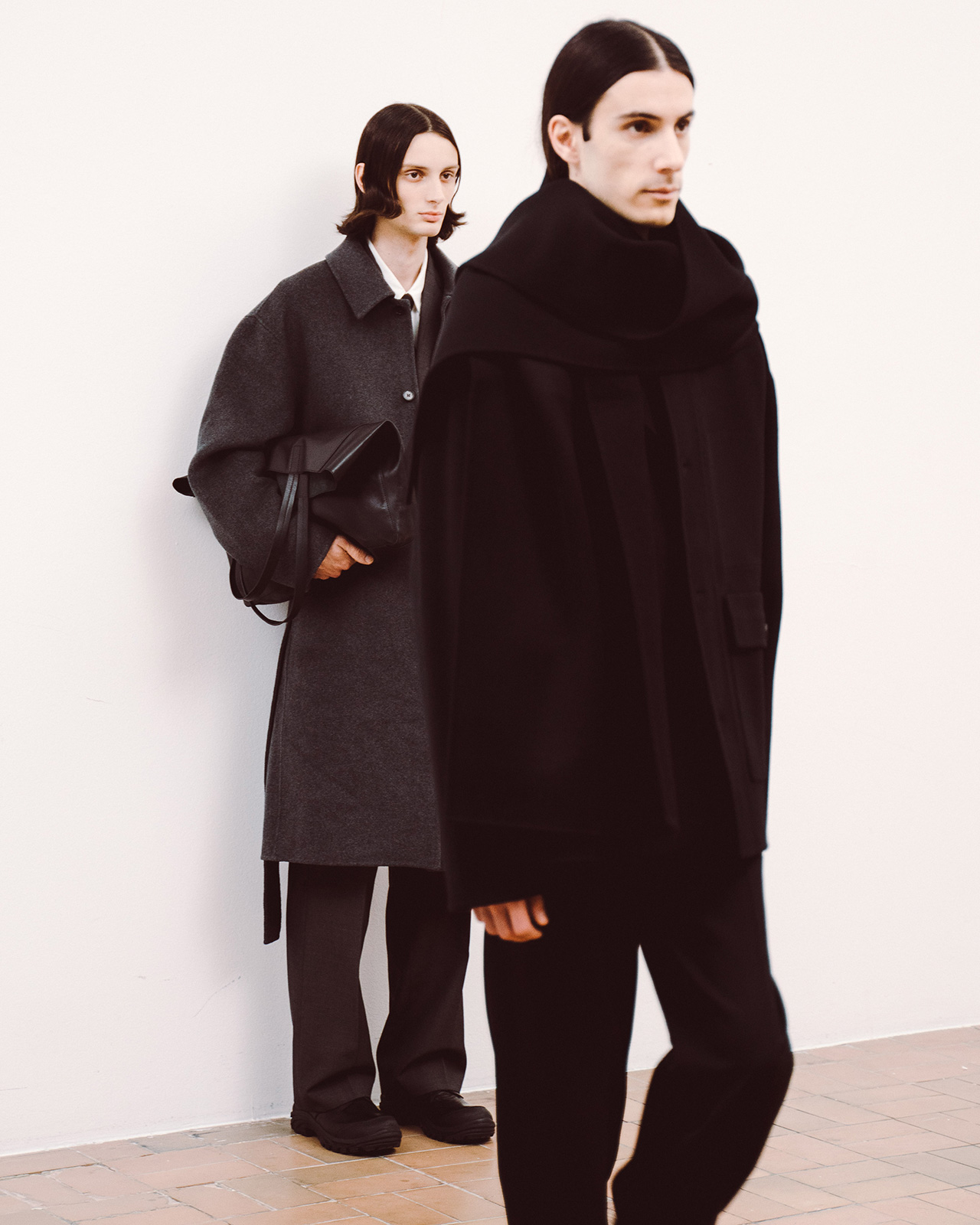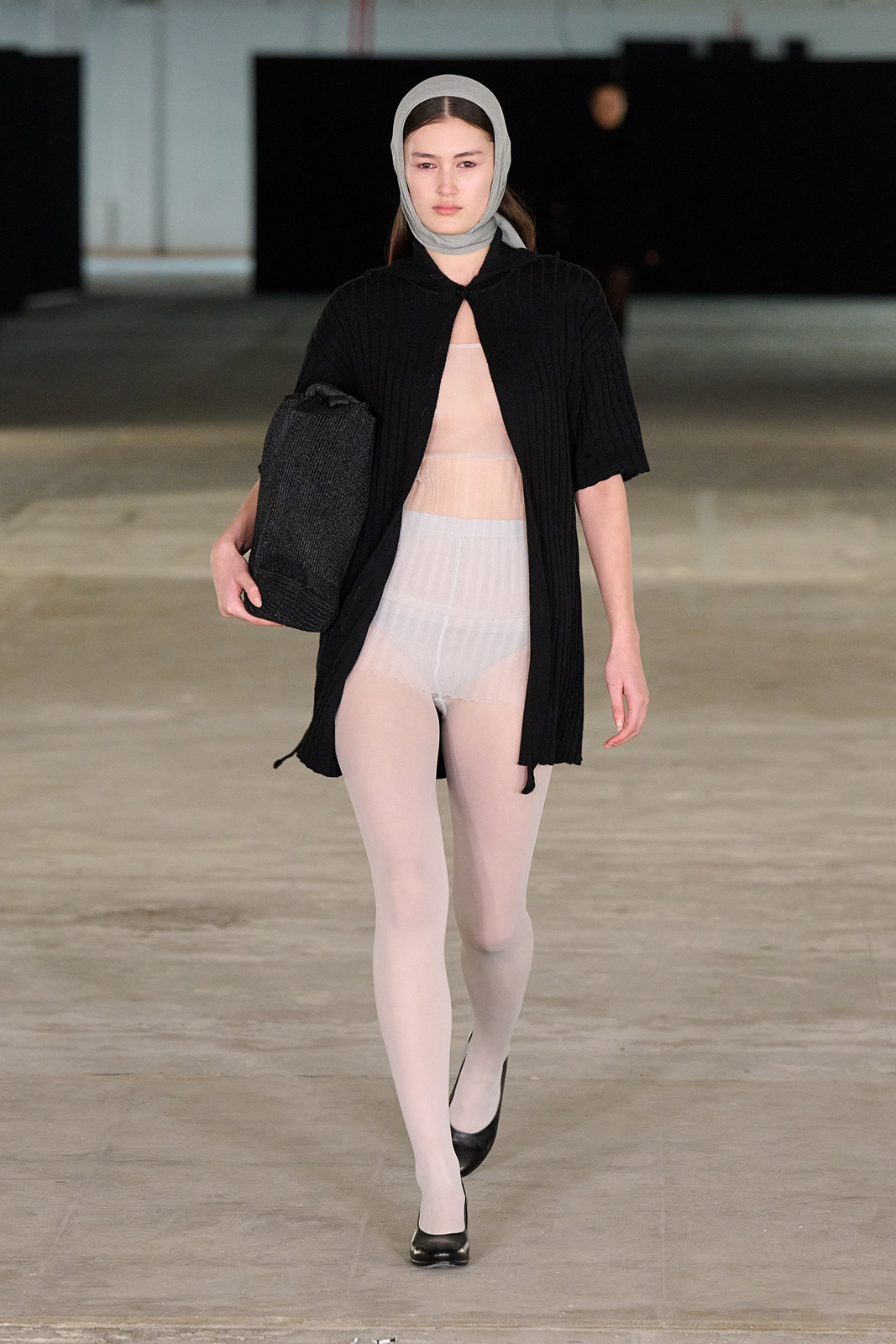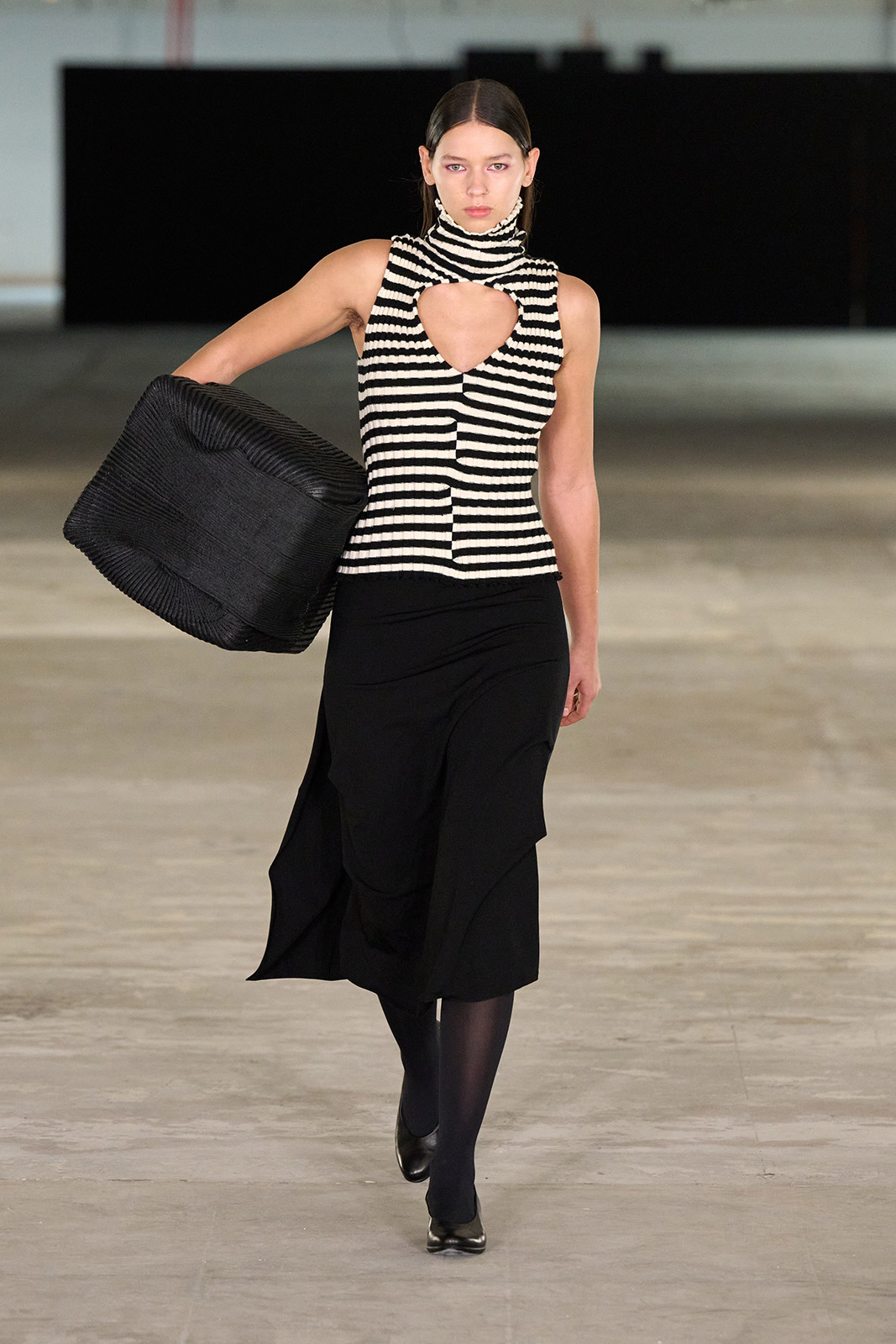CPHFW Autumn/Winter 2025 cements the Danish city’s status as a launchpad for emerging designers, blending sustainability and collaboration for a truly impactful season
Last week, Copenhagen Fashion Week held its 38th semi-annual season showcasing the latest in Scandinavian style. Attending the event is a rite of passage for writers, editors, buyers, and stylists—it’s an opportunity to witness an early presentation from the up-and-coming names who carry the torch for Nordic fashion. Historically, the city has been an incubator for local designers that eventually become global, Paris-presenting brands like Ganni, Cecilie Bahnsen, Stine Goya, and the now-shuttered Saks Potts. Unlike the organizations behind most fashion weeks, Copenhagen Fashion Week owns a majority of the programming and funding behind the week’s events, making the company the main gate openers for local talent. The Autumn/Winter 2025 season presented 34 designers on its roster and was no exception to the CPHFW rules, which set the bar high for introducing new names to the global fashion zeitgeist.
Zooming out to assess Copenhagen’s culture and economy is essential in understanding the city’s approach to hosting a fashion week. “There is an incredible spirit of entrepreneurship, creativity and collaboration in the city and in the wider Nordic capitals that is unique to other countries,” says Isabella Rose Davey, the COO of Copenhagen Fashion Week, when asked what sets the city apart from other fashion epicenters. “What Copenhagen and the Nordic landscape has at large, taking a birds eye view, is a socialist economy that also puts the people first.” It’s true—free healthcare, free tuition, and affordable housing systems paint a picture for a more inclusive and democratic environment. “A ‘together we are better’ mentality very much reigns here, which supports the creative landscape” Davey adds. And then there’s the country’s design legacy, which lends itself to a naturally creative landscape, and a country that is slowly bouncing back from a 2023 economic recession. Together, these elements create the perfect soil for new designers.
The aforementioned all together now mindset is a key explainer behind Copenhagen Fashion Week’s structure. Upon arriving as an official attendee of their guest program, one is swept off their feet from the airport in a Polestar electric vehicle, brought to their room in a hotel that partners with CPHFW, and even delighted by several packages from participating brands, like haircare from Björn Axén and a necklace from Pandora (the Danish jewelry empire is one of CPHFW’s biggest supporters every season). There is a coming together of companies and resources that makes the entire week possible, even funding from larger, “graduated” Danish brands to back new ones, which sets the tone for how designers are welcomed into the fold. “We offer a three-pronged approach with our incubator program, Newtalent, which encompasses support across a financial bursary that is kindly provided by patrons. This season’s supporters were Rotate and Ganni,” Davey says. The program also offers mentorship from various leaders who partner with CPHFW to provide industry insight, like Ganni founder and creative director Ditte Reffstrup, Instagram fashion partnerships lead Clara Cornet, and Neiman Marcus editorial director Bruce Bask. Beyond providing tactical advice, CPHFW also offers sustainability guidance to designers from their own in-house sustainability team and Transition, a consultancy that helps companies improve their production processes and carbon footprint. (It should be noted that to even participate in CPHFW, designers must meet a set of rigorously sustainability standards.)
Of course, the Newtalent program is not the only one of its kind. It sits alongside a handful of similarly-minded organizations, such as the LVMH Prize, the CFDA Awards, and the ANDAM Award. But what sets CPHFW’s incubator program apart from others is the Danish way it’s built upon. “Our program is part of a moment to create a positive impact in the industry at large,” Davey says. Ditte Reffstrup of Ganni builds upon Davey’s point: “Copenhagen’s fashion scene is experiencing a surge of young, fearless creatives who are challenging the norms and redefining our industry. The future of Copenhagen fashion is driven by these talents who blend sustainability with creativity, ensuring our city remains a beacon of progressive and responsible fashion.” The sustainability requirements (which include circular design principles and working condition standards) are perhaps the most unique identifiers of the Newtalent program, and while that could lead CPHFW to be more exclusive than welcoming as an incubator program, it actually positions the program as a guide for participating in a greener future industry while also introducing designers to opportunities for commercial success.
Sarah Brunnhuber, the designer and founder behind the brand Stem and a participant in the Newtalent program, agrees that starting in Copenhagen provided her with a special advantage. “I grew up in London, studied in the Netherlands and have also lived in Berlin, so I know a little bit about how it is to work as an emerging designer in another city,” she says. “I often feel that I would never have been able to start Stem anywhere else in the world. The combination of public funding, a fashion week that has a strong focus on sustainability and supporting young talent, a lively but small creative scene and network and a society that values and prioritizes art make it the perfect place to start.”
Brunnhuber started Stem with a focus on using all natural fibers, making her a perfect contender for the sustainability-focused program. She joined last August and presented her Spring/Summer 2025 collection then, and has since been able to continue building her brand thanks to the financial support from the program. “The most helpful resource, though, has been my mentor,” the designer adds. “Having someone to turn to for advice and through difficult decisions and to broaden my network has made everything possible. I believe CPHFW is quite unique in the support they provide through the community they have created.”
Another new participant in this season’s fashion calendar is Frederik Berner Kühl, who founded the eponymous menswear brand, Berner Kühl. This season was Kühl’s second time participating in the Newtalent program — before that, the brand presented shows outside of the program during fashion week. “Being in Copenhagen has been key since we started,” the designer says. “It’s small enough to utilize our network, but it’s getting enough international attention.” While the environment provides a friendly backdrop to new coming talent, it’s only the first ingredient needed to get off the ground. The next, of course, is finances. “Being aided financially through Newtalent has made things a lot easier. That is paramount when starting up—cash flow for small brands continues to be the biggest struggle.” For Kühl, the third ingredient for commercial success is the connections that come from the small yet internationally-connected community behind CPHFW. “We were connected with relevant press and editors through the program,” he says. “It’s so important that you start building personal relationships with these people right from the start.”
Perhaps one of the most interesting come-up stories among Copenhagen Fashion Week’s cohort of brands they’ve supported is that of Amalie Røge Hove, the designer behind knitwear line A. Roege Hove. Known for her sculptural (and sustainably-made) body-hugging, woven pieces, the Danish designer started her brand in 2019, and by 2023, she was a recipient of Woolmark’s prestigious Karl Lagerfeld Award for Innovation. Before that, she was part of CPHFW’s Newtalent scheme in 2022 and was supported by the program’s suite of offerings—but that wasn’t enough. The brand grew quickly, was picked up by retailers like Ssense and Farfetch, and struggled to keep up with the production demand, especially when retailer payments were often late. Røge Hove made the difficult decision to close the brand in October 2023. “When I got the Newtalent spot, looking back, I had no idea what that meant for me and my brand,” she says. “We grew in sales and got so much attention from that show.” While A. Roege Hove effectively graduated from the Newtalent program, it was brought back into the rotation of presenting brands last season with help from CPHFW, proving its commitment to its roster of local talent. The Autumn/Winter 2025 season marked a pivotal moment for Røge Hove, who was able to experiment with new fabrications and present a more whole expression of the brand. As for the learnings the designer gleaned from her experience, she focuses on the power of her Copenhagen community. “I see very much how CPHFW support marked the beginning of my brand becoming an actual name,” she says. “I would tell emerging designers to reach out, find your community in those other brands, because they are going to be your co-workers in this.”
That community, of course, may be one that only exists in a very specific environment. Coming together is Copenhagen’s modus operandi, which is grounded equally in its socialist economy and its design-centric culture. The city has endless pride for its local talent and the will and resources to support that talent. And even then, Copenhagen Fashion Week doesn’t seem determined to call itself an outlier. “We should all be connected like roots on a tree that lead to the wider nourishment and growth of a flourishing landscape of pioneering purpose-led creativity.” Davey says. “There are so many incredible emerging designer schemes around the world, and we all have the same responsibility.” All together now, indeed.


